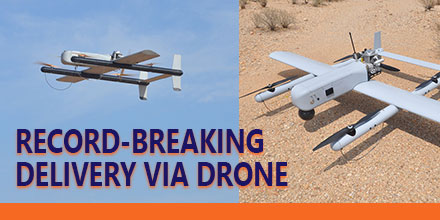
A record was recently set in long-distance delivery via drone. The record-breaking event took place
May 5, 2017 and involved several key stakeholders.
The Nevada UAS Consortium, dubbed Team Roadrunner, flew a fixed-wing Unmanned Aerial Vehicle (UAV) over 97 miles to
Austin, Texas through use of cellular connectivity.
Delivery via Drone
Launched from an urban location in central
Texas, the UAV flew a pre-planned route through National Airspace System (NAS). Team Roadrunner used mobile command and control, a visual observer team, and stationary visual observers equipped with enhanced radios and cell phone communications which allowed the UAV to fly using a cellular communications link.
The UAV successfully landed in Austin, Texas and delivered its package.
Team Roadrunner
consisted of the FAA-designated Nevada UAS Test Site, Volans-i UAS, Latitude UAS, AUV Flight Services. The team also included ground and mobile visual observer support from
Embry-Riddle Aeronautical University (ERAU) Worldwide campuses.
“This was the most challenging, logistically-intensive, and longest package delivery demonstration recorded to date using cellular technology in the NAS. It allowed us the opportunity to demonstrate innovative capability – a demonstration necessity for the UAS industry,” said Dr.
Chris Walach, Director of the FAA-designated Nevada UAS Test Site and Adjunct Assistant Professor,
College of Aeronautics at
Embry-Riddle Aeronautical University Worldwide. “Assembling a resilient team, being at the right place at the right time with the right technology and entrepreneurial perspective helped us accomplish this mission.”
Walach continued, “Drone package delivery in an urban and remote environment is the wave of the future. N
evada is leading and helping grow this major commercial endeavor. These milestones prove that technology enables the safe integration of UAS into the NAS for long-distance and urban package deliveries.”
Nevada previously conducted historic package delivery BLOS demonstrations in
Hawthorne, Nevada at over 39 miles as well as the first publicly-recorded package delivery to a
Reno, Nevada homeowner.
Safety precautions along the route
The operation included layers of safety. Along the flight path, the team stationed visual observers as well as a mobile team to cover remote areas.
“It is very exciting to be part of something truly ground breaking. Integration of students and alumni on similar projects with
NIAS in the future extends our outreach to the industry,” said Dr.
Scott Burgess, Associate Professor,
College of Aeronautics at
Embry-Riddle Aeronautical University Worldwide.
“Aviation has evolved much since the days of the Wright Brothers. I truly believe that unmanned systems are going to revolutionize the aviation industry and beyond. I am proud that
Embry-Riddle faculty, students, and fellow Alumni are actively playing a part in this incredible journey,” said
Kandi Windham, Campus Director,
Embry-Riddle Aeronautical University Worldwide,
Houston, Texas.
“This mission was extremely complicated. Ensuring that the UAS met all the performance characteristics was only one piece. We placed great emphasis on flight safety, airworthiness, communication, command and control, air and ground coordination, and VO logistics. The Volans-i,
Latitude, AUV Flight Services, and the
NIAS team worked extremely well together. Given the complexity and the ultimate success of the mission, it is clear to me that we couldn’t have picked a better team,” said
Hannan Parvizian, Volans-i Founder.
Future of drone delivery
“Creating a safe and thriving drone industry is an incredible challenge, especially when coupled with drone package delivery. The loss of communications during a long flight is a real concern. This mission showed cellular technology can ensure communication with a drone is not lost over a long-distance delivery. The record-breaking success of Team Roadrunner’s aerial package delivery mission proves that diligent testing in complex conditions will lead to drone delivery becoming reality,” said
Steve Hill, Executive Director of the
Nevada Governor’s Office of Economic Development.
The Nevada UAS Test Site is one of seven Federal Aviation Administration-designated UAS Test Sites. The Nevada UAS Test Site in consultation with the Lone Star UAS Test Site helped plan the mission.
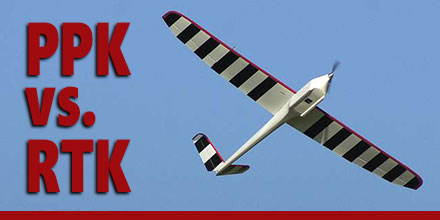 UAS vendors targeting markets from commercial survey to agriculture are fielding systems with real-time kinematic GNSS (RTK) capability.
In principle, RTK promises accuracies at the 1-3cm level. The main purpose is to minimize or eliminate the need for ground control points, thereby reducing cost.
Altavian uses GNSS receivers upgradeable to RTK operation, but favors another approach for this level of accuracy: post-processed kinematic (PPK). There are a couple of reasons why:
UAS vendors targeting markets from commercial survey to agriculture are fielding systems with real-time kinematic GNSS (RTK) capability.
In principle, RTK promises accuracies at the 1-3cm level. The main purpose is to minimize or eliminate the need for ground control points, thereby reducing cost.
Altavian uses GNSS receivers upgradeable to RTK operation, but favors another approach for this level of accuracy: post-processed kinematic (PPK). There are a couple of reasons why:

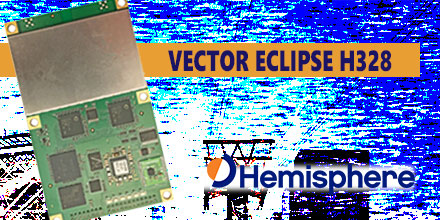 Hemisphere GNSS recently announced the
Hemisphere GNSS recently announced the  A record was recently set in long-distance delivery via drone. The record-breaking event took place
A record was recently set in long-distance delivery via drone. The record-breaking event took place  In December Aeromao Inc., completed a full photogrammetric survey mission of an island with an Aeromapper Talon UAV...in one flight. The survey took place in collaboration with Foresight Surveyors.
One of the most unique and exotic islands in the Maldives, the Talon surveyed a total area of approximately 251 acres or 1 Sq. Km. at a GSD of 2cm/pixel.
In December Aeromao Inc., completed a full photogrammetric survey mission of an island with an Aeromapper Talon UAV...in one flight. The survey took place in collaboration with Foresight Surveyors.
One of the most unique and exotic islands in the Maldives, the Talon surveyed a total area of approximately 251 acres or 1 Sq. Km. at a GSD of 2cm/pixel.
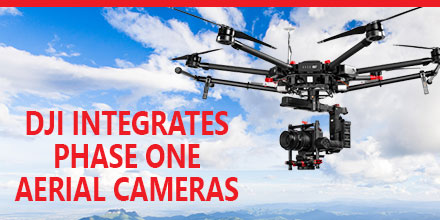 Phase One Industrial recently announced the full integration of its iXU and iXU-RS aerial cameras with
Phase One Industrial recently announced the full integration of its iXU and iXU-RS aerial cameras with 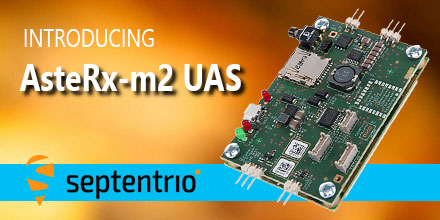 May 8, 2017 - Septentrio, a leading manufacturer of accurate and reliable GNSS solutions, announced the release of the AsteRx-m2 and AsteRx-m2 UAS OEM boards.
These OEM boards bring the latest in GNSS positioning to the market with unmatched interference mitigation technology all on ultra-low-power.
Septentrio will showcase these OEM boards in Dallas, Texas at AUVSI's Xponential 2017.
May 8, 2017 - Septentrio, a leading manufacturer of accurate and reliable GNSS solutions, announced the release of the AsteRx-m2 and AsteRx-m2 UAS OEM boards.
These OEM boards bring the latest in GNSS positioning to the market with unmatched interference mitigation technology all on ultra-low-power.
Septentrio will showcase these OEM boards in Dallas, Texas at AUVSI's Xponential 2017.
